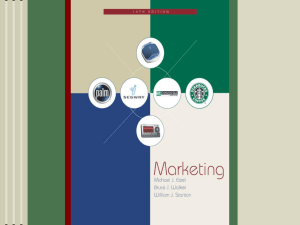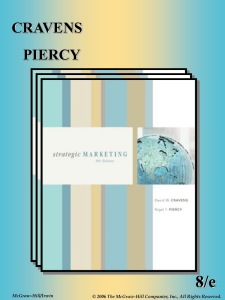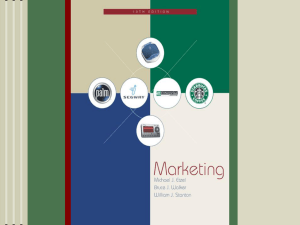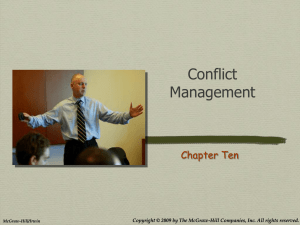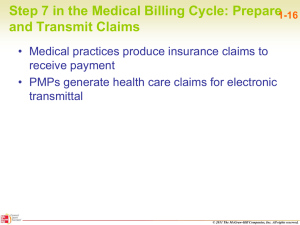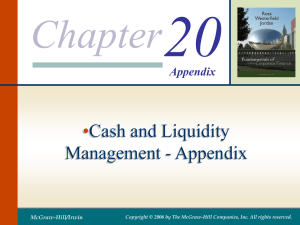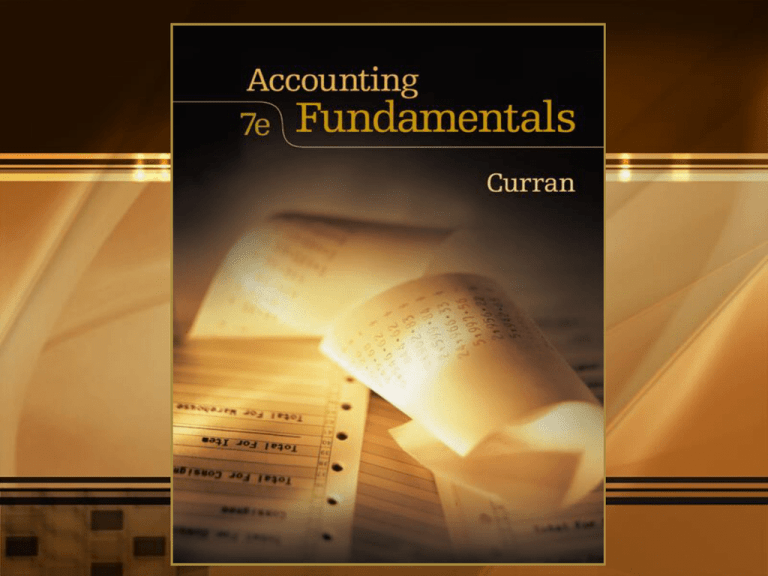
CHAPTER ELEVEN
INTRODUCTION TO
MERCHANDISING
BUSINESSES: SALES
11-3
INTRODUCTION TO MERCHANDISING
BUSINESSES: SALES
Objectives:
1. Describe the difference between cash,
charge account, and credit card sales.
2. Compute sales tax.
3. Use credit terms.
4. Compute the cash discount and amount of
payment due on an invoice.
5. Apply the procedure for handling sales
returns and allowances.
McGraw-Hill/Irwin
Accounting Fundamentals, 7/e
© 2006 The McGraw-Hill Companies, Inc., All Rights Reserved.
11-4
Selling at Retail
•Cash Sales
•Charge Sales
•Credit Card Sales
•Sales Tax
McGraw-Hill/Irwin
Accounting Fundamentals, 7/e
© 2006 The McGraw-Hill Companies, Inc., All Rights Reserved.
11-5
Selling at Wholesale
•Most selling at the wholesale level
is done on credit through the use of
invoices.
McGraw-Hill/Irwin
Accounting Fundamentals, 7/e
© 2006 The McGraw-Hill Companies, Inc., All Rights Reserved.
11-6
Credit Terms
• Credit terms listed on the invoice
tell when the customer must pay for
the goods.
McGraw-Hill/Irwin
Accounting Fundamentals, 7/e
© 2006 The McGraw-Hill Companies, Inc., All Rights Reserved.
11-7
Credit Terms
2/10, n/30 means:
A cash discount of 2% is allowed if
paid within 10 days. If not, the
balance is due within 30 days.
McGraw-Hill/Irwin
Accounting Fundamentals, 7/e
© 2006 The McGraw-Hill Companies, Inc., All Rights Reserved.
11-8
Sales Returns and Allowances
• Sometimes a customer will return
merchandise or request an
allowance. The procedure for
handling returns and allowances on
credit sales involves the use of a
credit memorandum or credit slip
listing the details of the credit
McGraw-Hill/Irwin
Accounting Fundamentals, 7/e
© 2006 The McGraw-Hill Companies, Inc., All Rights Reserved.
11-9
Accounting Terminology
•Allowance
•Merchandising business
•Cash discount
•Retailers
•Charge accounts
•Sales returns and allowances
•Credit cards
•Sales slip
•Credit memorandum
•Sales tax
•Inventory
•Source documents
•Invoice
•Statement of account
•Merchandise
• Wholesalers
McGraw-Hill/Irwin
Accounting Fundamentals, 7/e
© 2006 The McGraw-Hill Companies, Inc., All Rights Reserved.
11-10
Chapter Summary
• A merchandising business earns its
revenue by selling merchandise
(goods) that it has purchased.
Merchandising businesses are
usually either wholesalers or
retailers.
McGraw-Hill/Irwin
Accounting Fundamentals, 7/e
© 2006 The McGraw-Hill Companies, Inc., All Rights Reserved.
11-11
Chapter Summary (continued)
• Some retailers sell only for cash, and
others sell both for cash and on
credit. Charge accounts and credit
cards are two common types of credit
used in retail stores. Wholesalers
make most of their sales on credit.
McGraw-Hill/Irwin
Accounting Fundamentals, 7/e
© 2006 The McGraw-Hill Companies, Inc., All Rights Reserved.
11-12
Chapter Summary (continued)
• When sales are made, merchandising
businesses must record information
about them on source documents.
Retailers prepare cash register tapes
and sales slips. Wholesalers prepare
invoices. An invoice is a bill for the
merchandise.
McGraw-Hill/Irwin
Accounting Fundamentals, 7/e
© 2006 The McGraw-Hill Companies, Inc., All Rights Reserved.
11-13
Chapter Summary (continued)
• States, cities, and counties may
impose a sales tax. The retailer
collects this tax from customers
and periodically remits it to the
appropriate governmental agency.
McGraw-Hill/Irwin
Accounting Fundamentals, 7/e
© 2006 The McGraw-Hill Companies, Inc., All Rights Reserved.
11-14
Chapter Summary (continued)
• Wholesalers often include a cash
discount in their credit terms to
encourage early payment. This
discount is deducted from the invoice
total if payment is made within a
specified number of days.
McGraw-Hill/Irwin
Accounting Fundamentals, 7/e
© 2006 The McGraw-Hill Companies, Inc., All Rights Reserved.
11-15
Chapter Summary (continued)
• When a customer returns merchandise
that was sold on credit or receives an
allowance on such merchandise, a
credit memorandum, or credit slip, is
issued.
McGraw-Hill/Irwin
Accounting Fundamentals, 7/e
© 2006 The McGraw-Hill Companies, Inc., All Rights Reserved.
11-16
Topic Quiz
Answer the following true/false questions:
1. When an invoice reads 2/10 it means
that the customers can get a 2%
discount if the bill is paid within 10
days.
2. N/30 means that the balance is due at
the end of thirty days.
3. Companies may choose whether or
not to charge sales tax.
McGraw-Hill/Irwin
Accounting Fundamentals, 7/e
TRUE
TRUE
FALSE
© 2006 The McGraw-Hill Companies, Inc., All Rights Reserved.
11-17
Investigating on the Internet
As a research assignment, access a
business website and report sources of
information that might related to
merchandising businesses.
McGraw-Hill/Irwin
Accounting Fundamentals, 7/e
© 2006 The McGraw-Hill Companies, Inc., All Rights Reserved.
11-18
3. Companies may choose whether or not to charge
sales tax.
FALSE
If the state in which the business is
operating has a sales tax, then sales taxes
must be charged for each transaction.
(Return to Topic Quiz)
McGraw-Hill/Irwin
Accounting Fundamentals, 7/e
© 2006 The McGraw-Hill Companies, Inc., All Rights Reserved.

